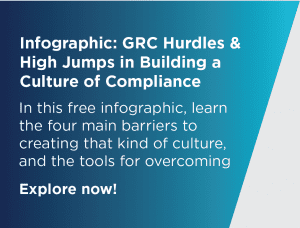Global Voices EMEA: Communicating your Code of Conduct Policy
Imagine this… you’re an EMEA compliance manager, and you’ve spent time and effort creating your organisation’s Code of Conduct policy. You make it accessible to everybody in the business, maybe by adding it to your intranet site. You send an email to let everybody know that the policy is now available. And then…nothing!
You don’t get any feedback about how the policy has been received. Nobody asks you any questions about the policy. You don’t know if people have understood the policy, and you don’t know if employees are even following the policy.
How do you communicate your organisation’s code of conduct policy in the most powerful and effective way? To answer this question, you need to think, what does best practice look like?
The proper steps you ought to observe
Firstly, I cannot emphasise how important it is that you have strong commitment from top management. How to behave in the workplace is a message that needs to come from the very top and be reinforced on a regular basis. Think about how best to deliver this message across the organisation, maybe an email from the CEO in the first instance.
Secondly, think about how you can make the Code of Conduct policy engaging and meaningful for your employees. Look at turning the policy from a black & white legal document to an easy to understand brochure. This brochure can take key points from the policy and display them in a more colourful, interactive and visual way, making it much more likely to keep the attention of the employee and ensure they understand what is being asked of them.
Don’t stop there! It’s a good idea to support this brochure with other types of communications. A good example is short, sharp and to the point videos. One organisation we’ve been working with have put together emotional videos that get people’s attention and call out individual accountability. Another idea is to distribute infographics around the business, a brilliant way to advertise the policy in communal areas ensuring compliance is kept in mind.
Enlisting employees in the process
It is also important that employees get involved in discussing what good behaviour looks like.You could look at asking employees to be involved in focus groups to define key behaviours. Think about putting in place Code of Conduct ambassadors across the organisation who can continue to educate on ethical behaviour. This is a tactic not only useful for EMEA compliance, but for enterprises everywhere hoping to build a “culture of compliance.”
 Finally, look at implementing mandatory training around conduct and behaviour. This training can be used as the final step to ensuring that your employees have fully understood the role of ethics & compliance in the day to day operations of your business. It may even make sense for this training to form part of the actual policy attestation process, where you have educated employees on conduct and behaviour and now need to confirm their understanding.
Finally, look at implementing mandatory training around conduct and behaviour. This training can be used as the final step to ensuring that your employees have fully understood the role of ethics & compliance in the day to day operations of your business. It may even make sense for this training to form part of the actual policy attestation process, where you have educated employees on conduct and behaviour and now need to confirm their understanding.
With all of these ideas, you need to make sure you are getting feedback from your employees so you know they have understood the policy, how it effects them, how they need to behave within your organisation and if they have any feedback, questions or concerns.
Best practices for building EMEA compliance – or in any region
Implementing robust policy management technology enables organisations to deliver the right policies and procedures to the right people, ensuring they become accountable by signing up to them and providing a detailed audit trail, reducing the risk of regulatory fines and reputational damage.
Alongside policy management technology, implementing a simple but highly effective workflow solution allows an organisation to gather feedback and queries from employees in a standardised manner. This means any potential issues or concerns can be flagged, reviewed and resolved more efficiently and collaboratively.
The advent of increased regulation within EMEA nations certainly compels better compliance, and good communication is key to achieving it. The same best practices hold for companies in the US and elsewhere, too, as greater regulation becomes the norm across global borders.




